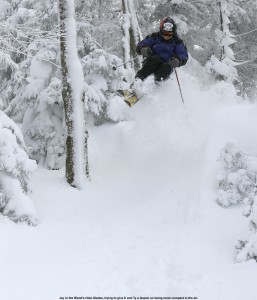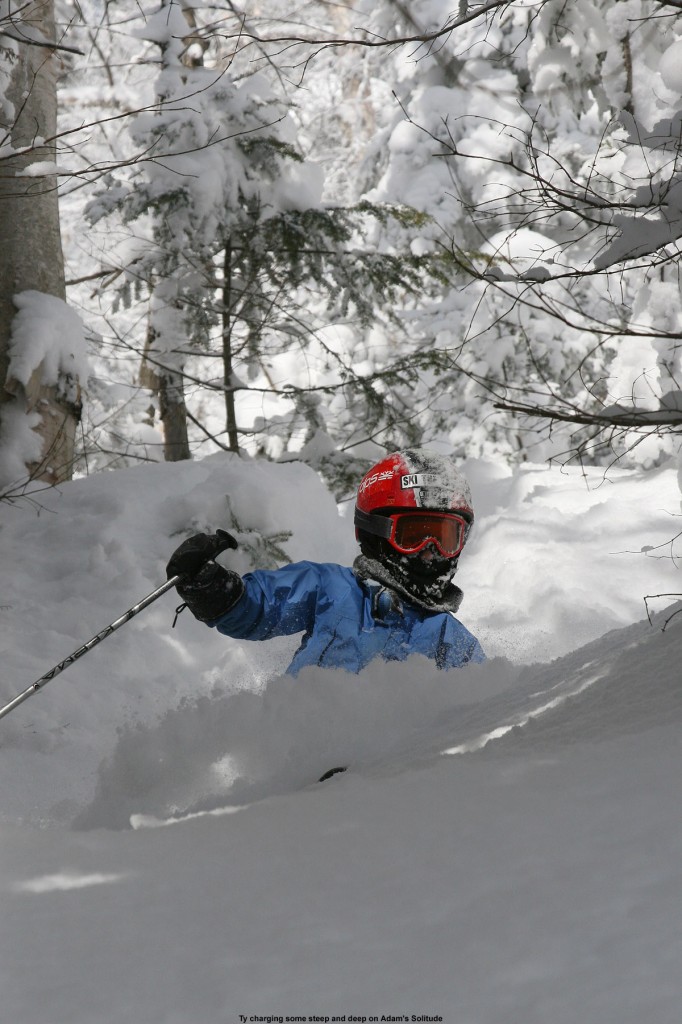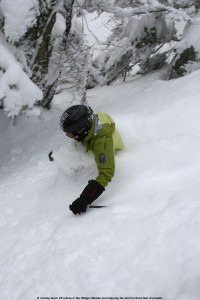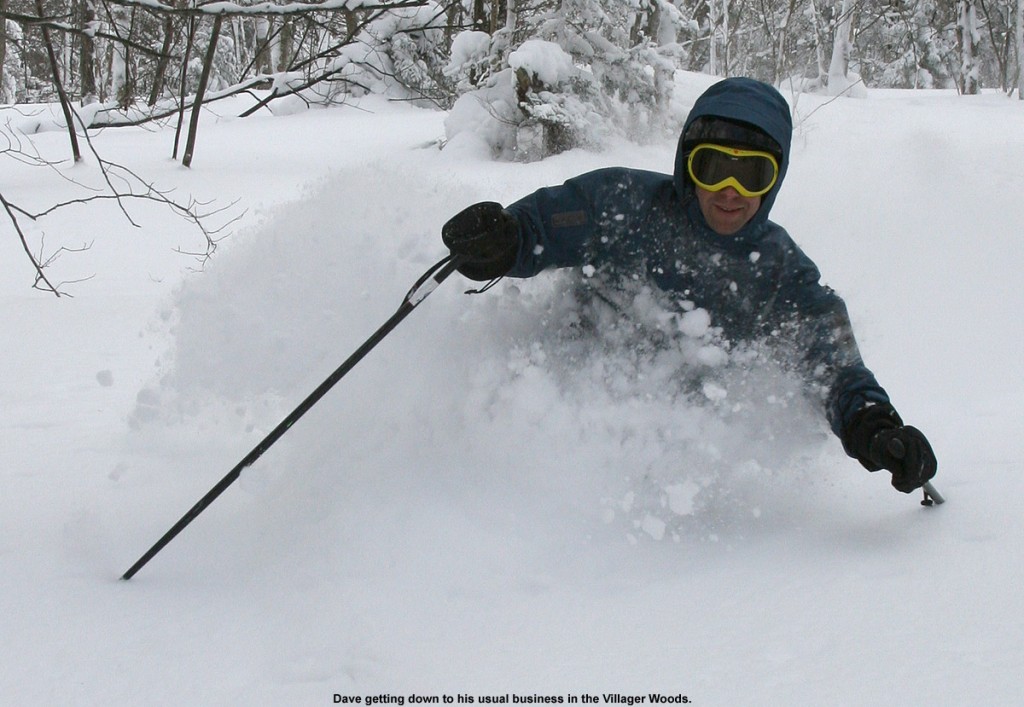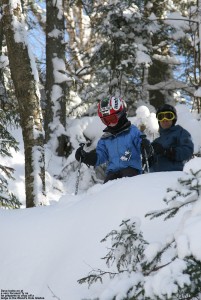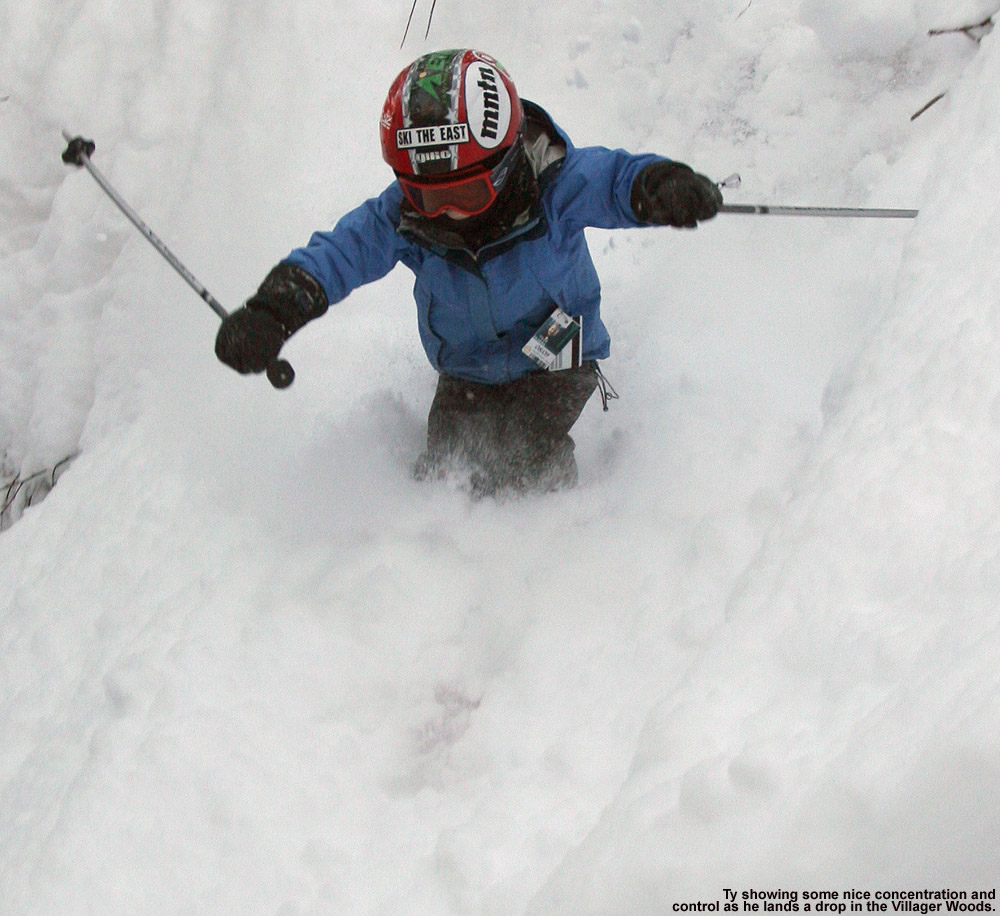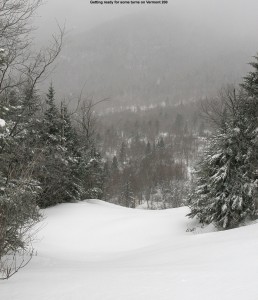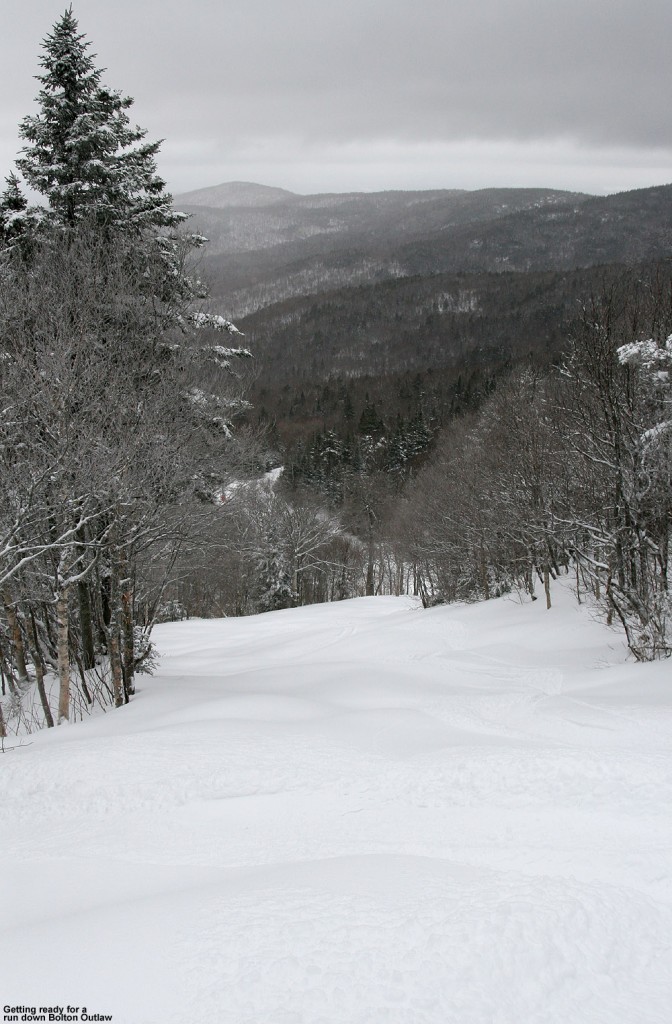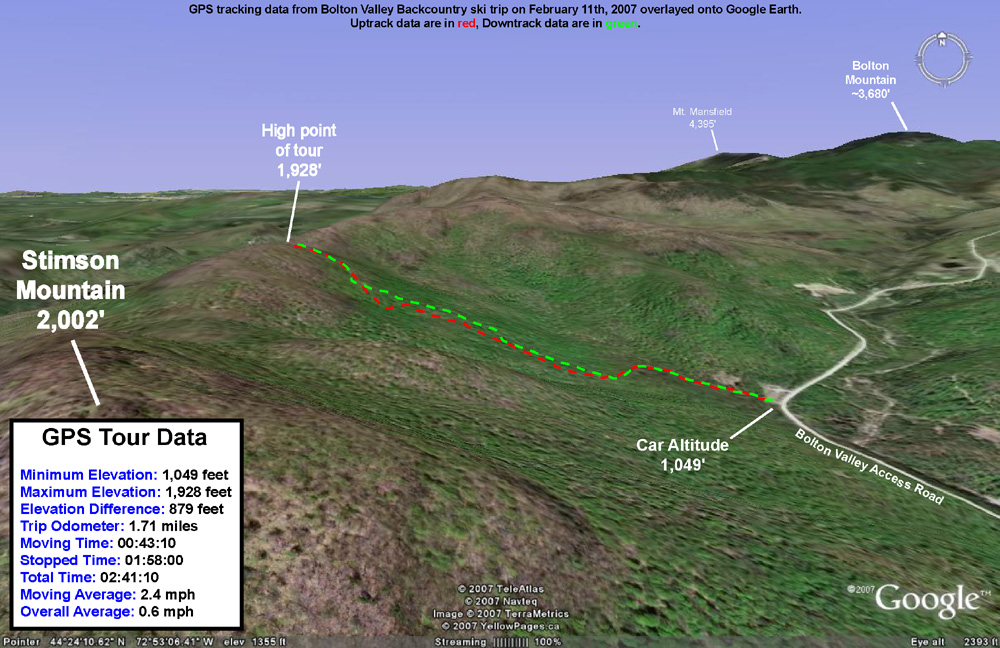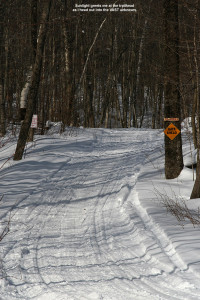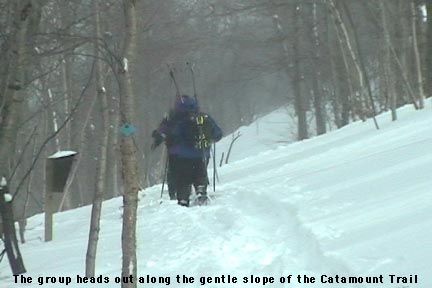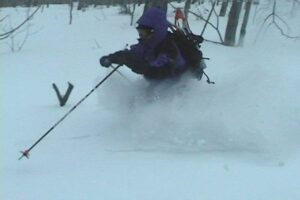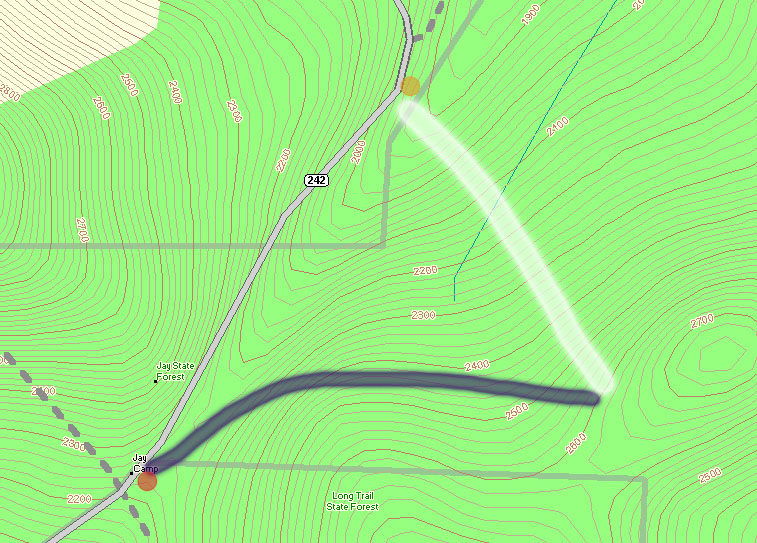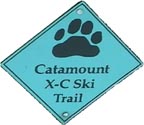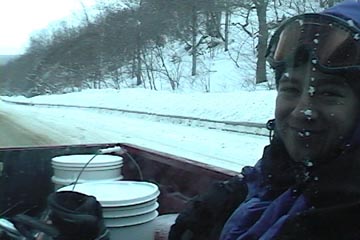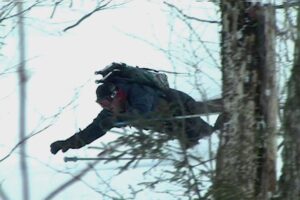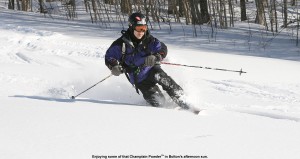
If it seemed like we had a lot of mixed precipitation events in Northern Vermont this January… that’s because we did. Many winter seasons will have some sort of January thaw, where the weather pattern shifts or resets and the temperature temporarily bumps above freezing, but according to Roger Hill, this year we had seven January thaws. None of these storms posed snow coverage issues for the local mountains; they were just winter storms with snow on the front and back ends, but warm temperatures with mixed precipitation in the middle. But even though they weren’t notable thaws for the mountains, each time the precipitation changed over to something other than snow, that was snow we weren’t stockpiling into the base depths for the season. The mixed precipitation was substantiating the total liquid equivalent in the snowpack, but once temperatures came back down after warming, the potential for hard snow surfaces arose. Fortunately, the Northern Greens worked their magic, pulling out enough snow on the back end of each storm to provide a decent shot of powder to get things back to normal. Last weekend at Stowe was a perfect example; we didn’t think the skiing was going to be any good, but Mt. Mansfield pulled that Champlain Powder™ out of the sky, and we found ourselves making fluffy laps off the Sensation Quad on Sunday afternoon.
Our latest mixed precipitation event came through during the Tuesday through Thursday period this week; snow started up on Tuesday, warmer precipitation mixed in on Wednesday, and then everything was back to snow on Thursday. There wasn’t much snow on the back end of that event, but sure enough, another system came through yesterday and today that dropped another half foot of powder in the mountains. Over at Americanwx.com, Powderfreak posted text and pictures about the skiing at Stowe yesterday, so it looked like we were back in business in terms of powder skiing.
I was feeling down with a touch of stomach flu this morning, but we decided to head up to Bolton for some turns in the afternoon because the day was looking just too fantastic to miss. There was bright sunshine, temperatures in the upper 20s F, and fresh snow to boot. When Stephen called us around mid morning today, we let him know we’d be up to the mountain later, and that we were planning on making a special run for some extra fresh tracks. With the Timberline Quad still not running, we decided to spot a car down there and catch a nice long run of powder from the Timberline Summit. We let Stephen know about our plan, and with both Johannes and Helena in full day ski programs/lessons, he was totally free to join us. Since we didn’t head up to the mountain last Saturday, we were eager to catch up with him and make some turns.
We parked a car at the Timberline Base, noticing about a half dozen other vehicles that were also there from people doing the same thing or earning turns, then dropped of our skis at the Village Circle and got a parking spot in the main Village lots. The lots were pretty full, but since it was around 1:00 P.M., spots were opening up we were able to get one down near the recreation center. E and I changed into our ski boots at the car, and the combination of sunshine and warm air was so mellifluous we could have just spent the entire afternoon right there. We rang Stephen, who said he was just getting off the top of Wilderness and would meet us at the base.

Ty wanted to do a warm up run on Snowflake, so we did, with a run through the Butterscotch Terrain Park as the boys often request. There was powder available off to the skier’s right as usual, so Stephen, E and I naturally availed ourselves of that. It was sometimes deep enough to get us floating, sometimes not, but even the subsurface was not half bad as Powderfreak had indicated; we were anticipating some very nice options over at Timberline.
With the warm up run out of the way, we could move on to getting ourselves over to Timberline. We rode the Vista Quad and opted for the Cobrass route. Stephen had warned us that the top, south-facing portion of Cobrass was icy, and he was right. We had to pick out way through that, with even the normally soft skier’s right featuring little in the way of nice snow. Once below that though, things improved on Cobrass Run, and improved even more once we got to Five Corners, where the skier’s right was filled with a delightful combination of powder and chowder.
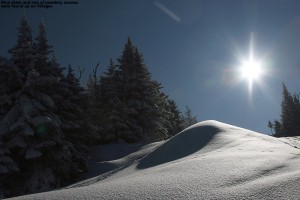
Finding ourselves at the Five Corners intersection, it was time to make our way up Villager. Although the trip up to the Timberline Summit is relatively short, E and I had our skins so that we could carry the boys’ gear more easily. I was in the process of strapping the boys’ skis to my pack, when Ty decided that he wanted to ascend with one ski on and one ski off. I warned him that it might be a bit tiring and inefficient, but he actually made it look pretty easy. The hike up Villager was glorious, with sunshine and temperatures in the 20s F just as advertised. We even got the occasional sunshower of snow when a breeze would blow some of the delicate fluff out of the trees. I was excited because despite the stomach ailment that had plagued me in the morning, I was feeling just about 100%. On the hike I checked on the depths of the new snow, and throughout the ascent we generally found 5 to 7 inches of powder over the old base. Previous rounds of snowmaking had produced some large whales up and down the trail, and now that they were coated with that beautiful blanked of fluff, the boys made good use of them for some sliding. It was fun watching the powder explode around the boys as they slid off the huge mounds, knowing that we’d hopefully be skiing that same stuff soon. In some leeward spots, we found up to 20 inches of powder that had blown in, and the breezes that put it there must have been quite gentle because it was just as light and fluffy as the powder that hadn’t seen any wind. I took it as a good sign that we’d be able to find some excellent powder on the descent.
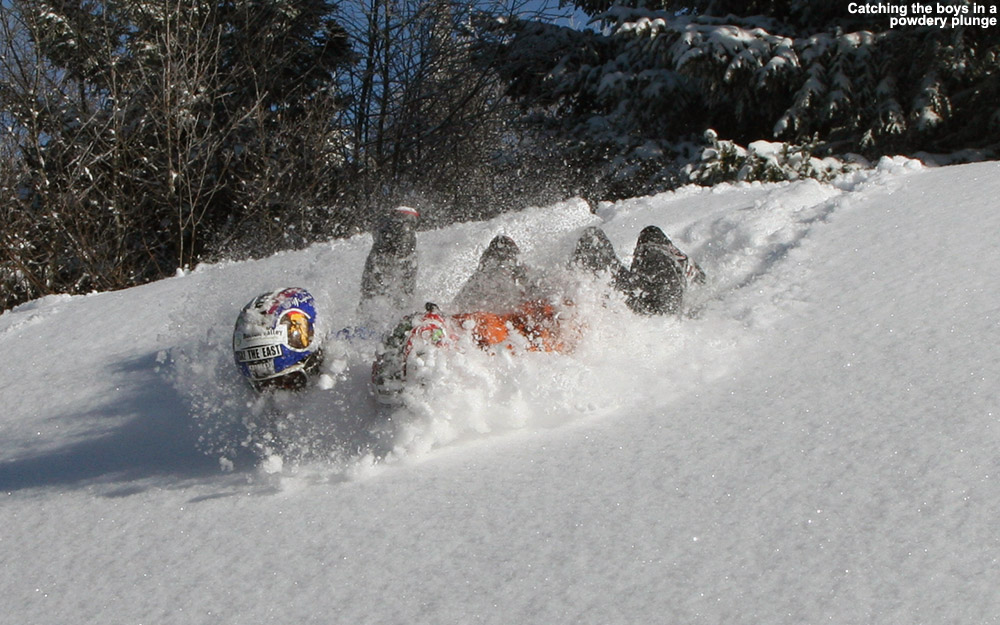
At the Timberline Summit we took our time and enjoyed the weather, with the boys playing around in the snow near the summit station of the lift. Eventually E and I finished getting the gear readied, and with Dylan anxious to start skiing, we got on our way with the descent. We headed down Brandywine and Intro to get access to the trails below the mid station, and the powder was indeed very good; consistent with what we’d seen on the way up Villager, there was roughly a half foot of classic Champlain Powder™. It wasn’t ultra light, so there was plenty of substance for a lot of floating, and even when you weren’t off the base, the subsurface was unblemished and reasonably soft such that even that skiing was great. There were some areas that had been hit by wind up high, but we able to find good powder on most pitches and knew that the effects of the wind would be even less below the mid station.
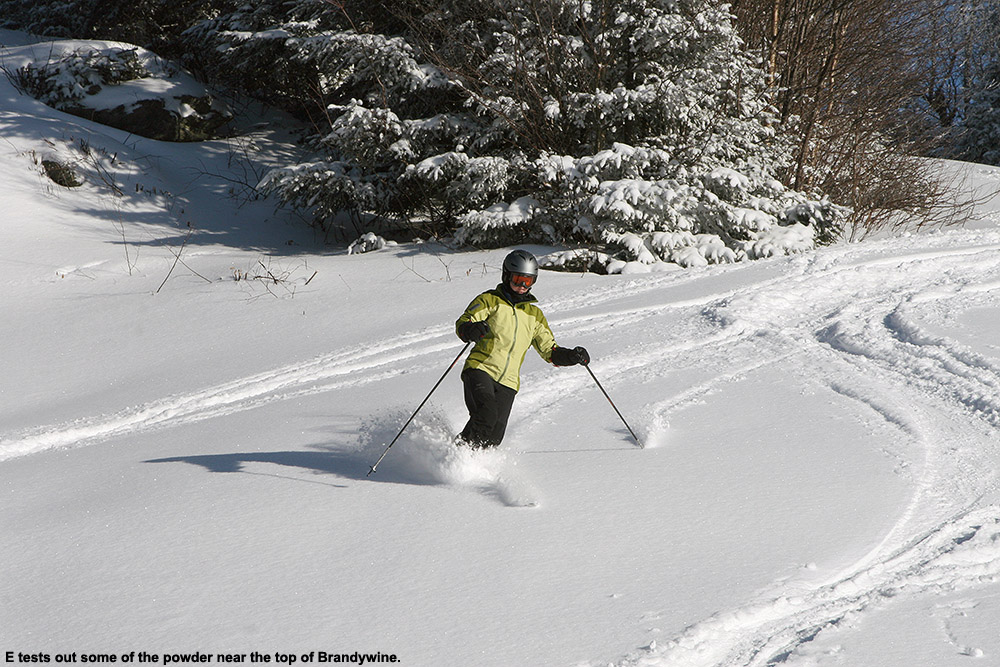
I was going back and forth in my head about whether we should head for Twice as Nice, with its consistent pitch, or Spell Binder, with its lower traffic and steep headwall. The headwall isn’t always the best option if we haven’t had a dump large enough to provide floatation in the steeps, but with the quality of the subsurface we’d observed, I decided we’d give it a shot. It turned out to be a fantastic choice. I headed down first, keeping to the skier’s right for the best snow at the top, and then cutting back left as I got into the lower part of the headwall. Even with only midfat skis, speed got one floating, and the smooth, undisturbed nature of the subsurface with the quality fluff on top made for an impressive ride. I pulled up a good distance below the headwall, and got out the Canon to catch the descents of the others. The boys went first and were looking extremely good, carving some big, high-speed turns down the headwall. In anticipation of the powder, we’d brought their fat skis, so with their light body weight, the girth of their skis, and the high speeds, they had no problem floating. Seeing Dylan with the confidence to arc down the slope at high speed was especially exciting, and it’s obvious the strides he’s making in his skiing this season; sifting through today’s action shots and observing his form really bore that out.
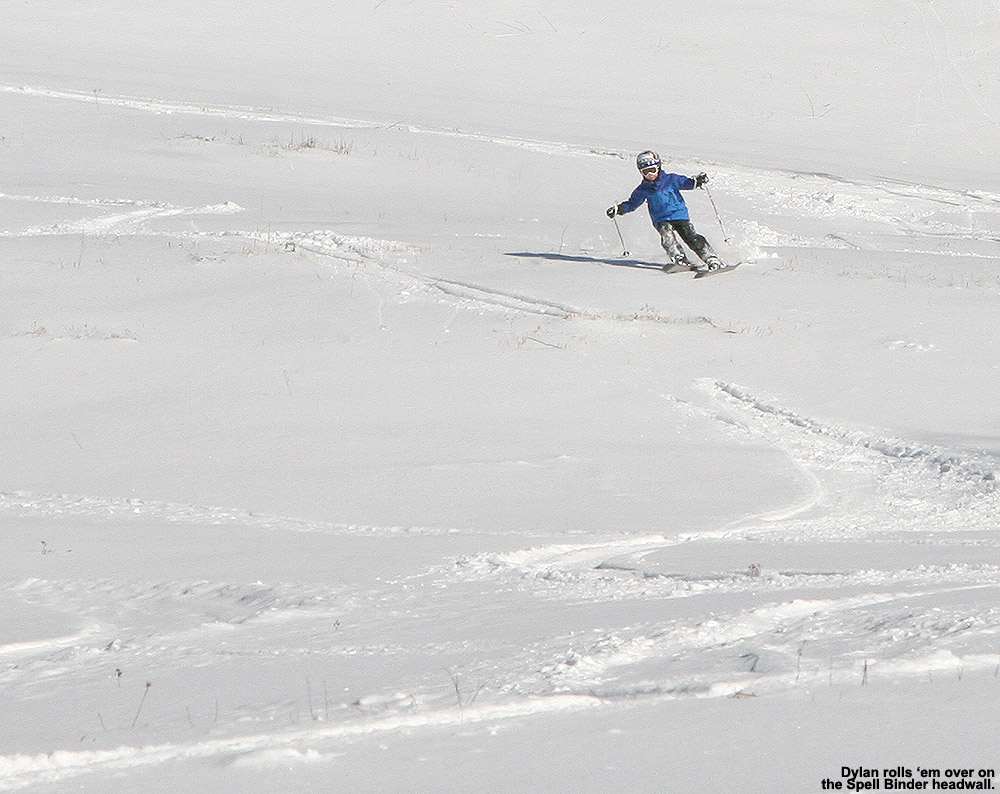
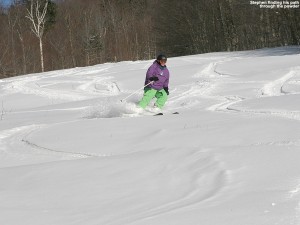
Once below the headwall we all enjoyed a long run of powder cruising, gliding our way through the fluff that was most protected from the wind. The dips and berms of the water bars were still occasionally visible, but fortunately the snowpack is well past the stage where they’re of much concern. We did another couple rounds of photography, taking advantage of the great light and excellent snow. The depth of the powder did decrease with elevation, but there were a few inches present even down to the 1,500’ level to make for quite a complete run. If we’d had the time and the boys had had the inclination, it would have been fun to run some additional laps on the terrain, but the day was wearing on and since the Patriots were playing, we were thinking of watching some of the Super Bowl. Stephen also had to pick up Johannes and Helena from their lessons… and let them know what they’d missed of course.
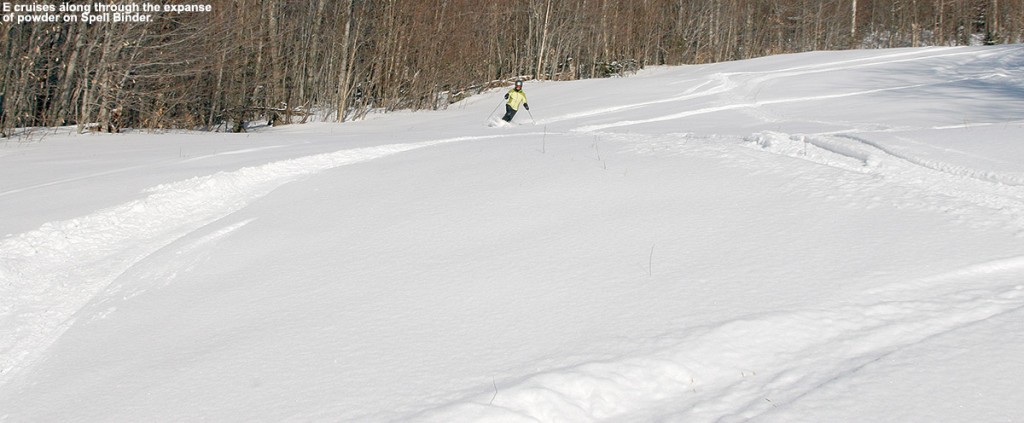
We dropped Stephen off at the Village Circle and headed back to our car to complete the circuit. We definitely need to get in more of these days, although I suspect Timberline will be opening soon. There’s always spring though when the mountain shuts Timberline back down. The weather pattern appears to be changing, and it looks like we’ll be trading in all the mixed events for something different. Hopefully we can keep the precipitation coming in the form of snow. E and I started up a two-day chili recipe yesterday, and the final stage was when it cooked in the crock pot today, so it was ready when we got home. It was very good… very good – my only regret was that I had to take it easy due to what my stomach had been dealing with earlier. Fortunately it stores very well!





















